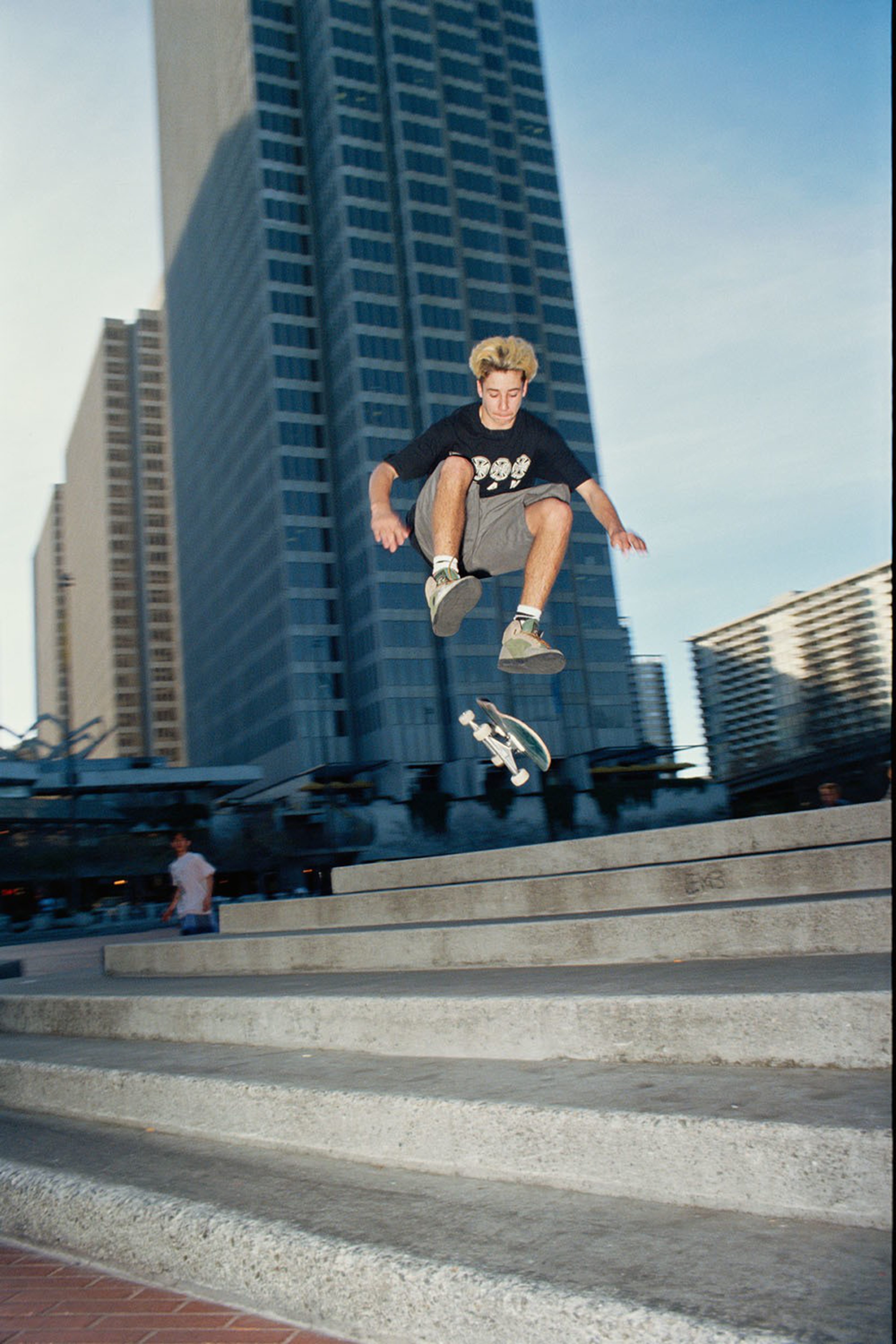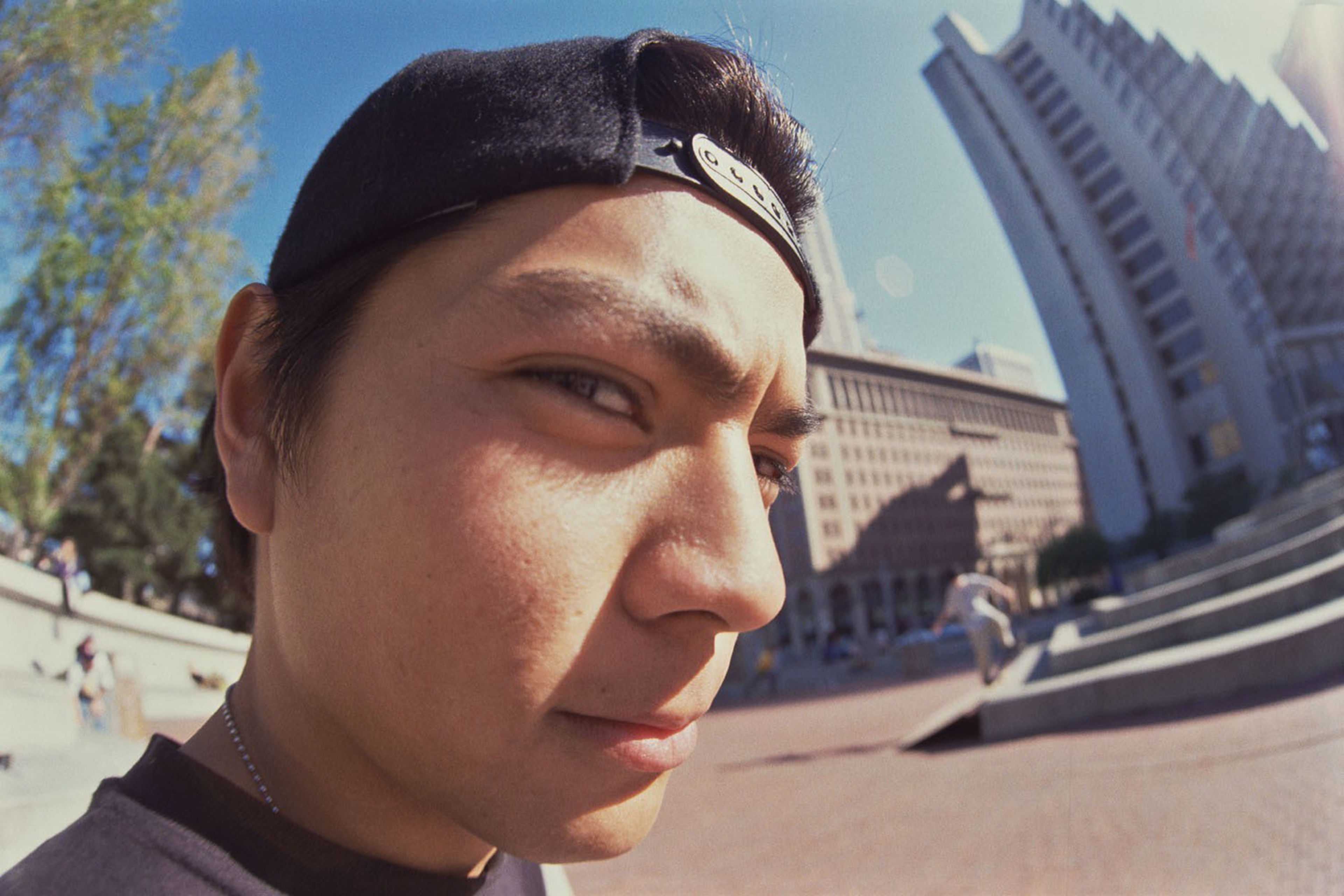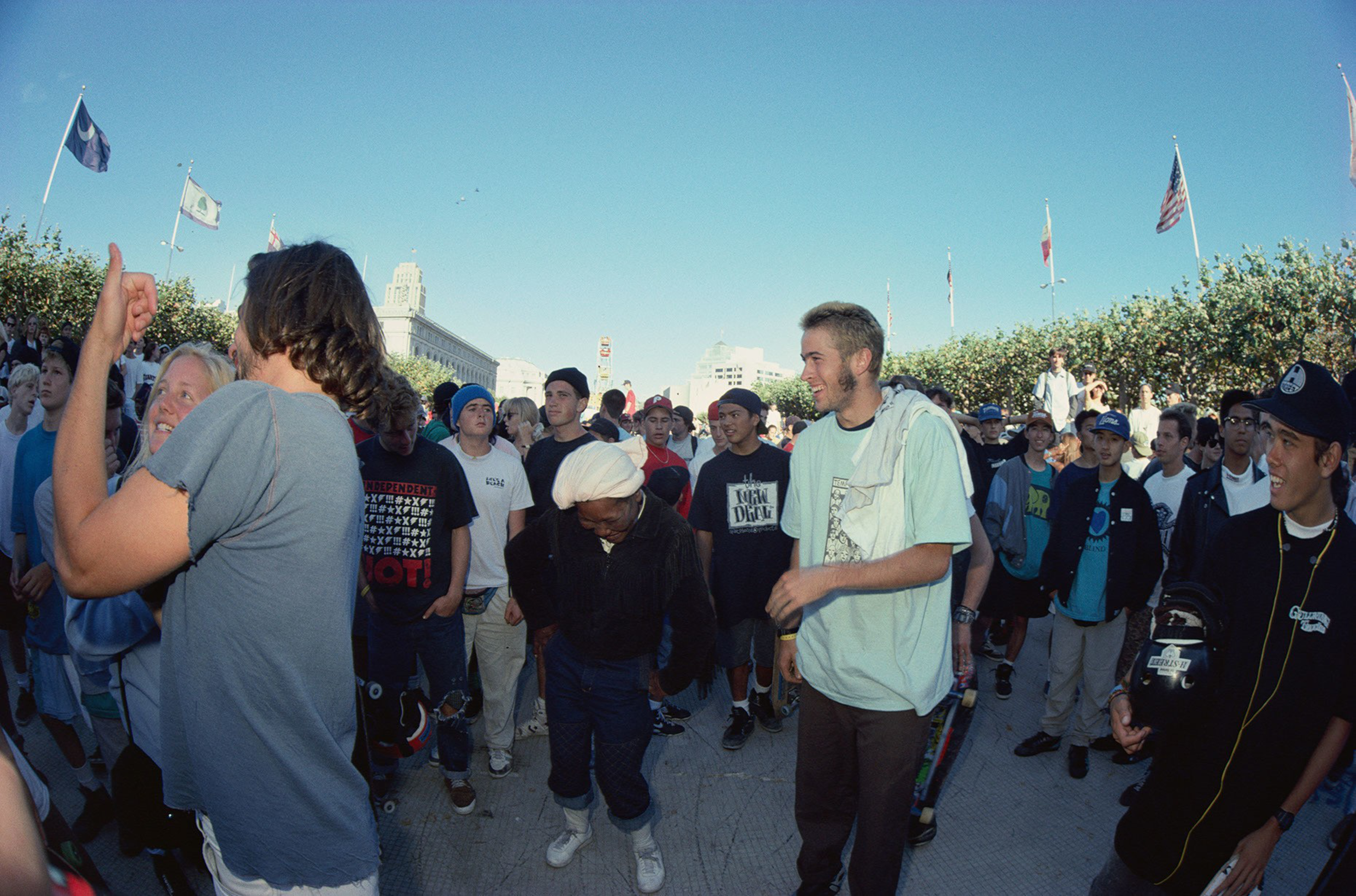The Wide Shot celebrates the work of Bay Area photographers, showcasing their latest projects and the behind-the-scenes stories of how they got the shots.
From the cafés of Montmartre to CBGB in the East Village, certain places become synonymous with cultural movements, so intertwined that you can’t imagine one without the other. San Francisco has more than its share of such sites. City Lights anchored the Beat generation, Haight-Ashbury birthed the hippie movement, and the Castro became a crucible for gay rights.
In the past decade, the Embarcadero has staked its claim among these historic touchpoints as a proving ground for a generation of street skaters.
As the scene flourished in the early ’90s, photographer and filmmaker Jacob Rosenberg regularly made the trek from his home in Palo Alto to document the raw energy of the skateboarder scene on the Embarcadero.
Now, with the area facing the pressures of redevelopment — most notably, the looming removal of the Vaillancourt Fountain, which skaters have loved — Rosenberg is unveiling a collection of never-before-seen photographs in his new book “Epicenter.” He spoke with The Standard about how the project came together and why the Embarcadero still matters.
This interview has been edited for length and clarity.
For the non-skateboarders out there, why was Justin Herman Plaza on the Embarcardo such a ’90s landmark?
In that era, most traditional skate spots offered one or two elements to skate. But Embarcadero offered countless elements and a massive open space to skate freely. The plaza allowed you to try tricks on small curbs or down small sets of stairs, then, with confidence, you could attempt the same tricks on bigger ledges and then down bigger sets of stairs. Skaters would create “lines” of ledge and stair tricks threaded with flat-ground tricks on the bricks in between. The result was that the language of skateboarding grew at an accelerated rate. It was just the right environment at the right time and cultivated a community of skaters who pushed each other and, in turn, shifted and propelled the culture forward.



It also provided an undeniably iconic backdrop. The light, the textures, and the energy were second to none. It was very accessible with public transportation, and you had this constant movement with all of the commuters and travelers crossing the plaza. It felt absolutely alive, and in that feeling, skateboarding belonged there.
What is the one trick that was done at Herman Plaza that stands out to you?



I didn’t witness it firsthand, but I saw it in Thrasher Magazine, and it blew my mind: Mark Gonzales ollie-ing the gap at the top of the wave was such a lightning rod of progression. That gap is massive, and at the time that Mark did that, it was almost unheard of to ollie down something that big. After that moment, everyone just called it “The Gonz Gap.”
That trick, and Mark skating it, really made it a destination for the people outside of San Francisco. Of course that trick impacted skaters in SF, but growing up in the South Bay, I can only speak to how mindblowing that was for us and how it only takes one memorable trick to instantly make a spot become a destination.
Which photos from your book are your favorites?
There are three that really stick out. First is a photo of Jovontae Turner doing a nose manual with the fountain behind him. It just feels like a perfect moment in time, and the direction of the bricks and curve of the buildings overhead pulls you in.

The second is this blurry portrait of James Kelch looking over his shoulder while he holds a pair of shoes. Technically, it’s out of focus, but there is something about it that makes it feel perfect to me. It’s better that it’s not sharp, because it makes you yearn for that focus and clarity, which isn’t there, akin to the spot also being gone.
Last is the portrait of Mike Carroll sitting wearing his Adidas Superstars that he’d hand-painted with a Sharpie. His clothes, dyed hair, and look make a very clear portrait of an era. My relationship with Mike is really the center of the book, and the work we did together is something I deeply treasure.
What do you hope others take away from your photo book?

I would hope that the viewer feels the humanity of this community and the raw beauty of the expression that happened there. I want the reader to understand that this place holds a substantial and undeniable significance in the history of San Francisco. On a civic level, I hope the book helps substantiate the inclusion of skateboarding in the nuance or actual physical space that will inevitably replace the plaza. On a subliminal level, skateboarding has always been perceived as for misfits and outcasts, which could be correct. But these misfits and outcasts found each other, cultivated a crew of exceptional talent, and impacted an entire culture.
Next time you see a skater, see them as a contributor to something special, or a person who has found belonging in their life.
